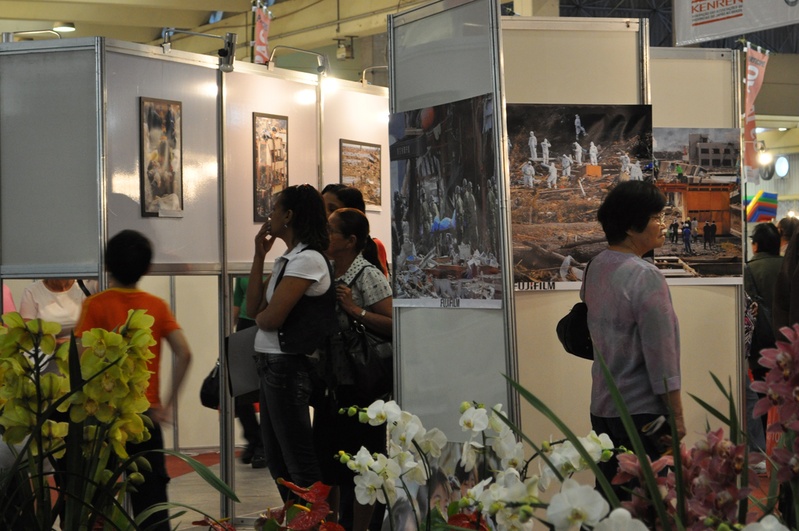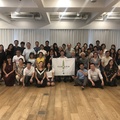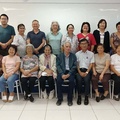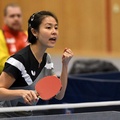In March 2011, it was only a month ago that it had begun working on a publishing company focused on Japanese culture. My job was to take care of a site whose content was related to that theme.
At that March 11, in the morning of Brazil, I heard on the radio that a strong earthquake had happened in Japan. Although earthquakes occur regularly in the country, by the tone of the news, I realized that it had been much more serious.
I went to the office, following the news on my cell phone. Estimates of the number of deaths and property damage were only increasing. When I finally watched the images of the tsunami going towards homes and crops, I was stunned for a moment.
The content on the site I worked was mainly composed of “cold material,” ie timeless texts (mainly historical and cultural curiosities). The coverage of the Great Eastern Japan Earthquake has come to occupy all the prominent spaces of the site.
The first few working hours of that Friday were dedicated to get in contact with journalists in Japan that could in clarifying the situation. We could not find anyone at that time.
In the afternoon, I had to go to cover a technology event, which was also attended by representatives of Japanese companies. All expressed concern with their colleagues in the headquarters.
On the way back to the office, I continued to search for contacts who could talk about the situation. Soon after the tsunami, the difficulty of communication was the main concern among Nikkei community.
At the time I had friends and relatives living in other regions of Japan. A friend told me that in Saitama, train service was interrupted and there was some difficulty due to electricity cuts. Friends in the Kansai region said that the routine was close to normal. I managed to talk to two journalists and an exchange student, who helped me to produce some texts for the site.
In the following days, news started to show evacuation and radioactive contamination, and more images of destruction in areas affected by the tsunami. The reaction of many families in Brazil was recommending the return of relatives who were in Japan. This situation even coined the term “flyjin” to refer to people who have suddenly decided to leave the country.
Japanese-Brazilian entities organized fund-raising campaigns. In a great collaboration based on good will, it was decided that donations would be sent to the Red Cross and the Japanese Embassy in Brazil. At the same time, I was informed about Brazilians residents in Japan had organized campaigns to send supplies to the Tohoku region.
In social networks, people shared messages of support, such as the campaign “Pray for Japan.” My fear was that con men would take advantage of the situation to make money amid the commotion. Fortunately, I am not aware about any case of this kind in Brazil.
In the following weeks, most of the news published in Brazil focused on the issue of radiation. Readers started reading and hearing about concepts like microsievert, half-life, radioactive isotopes and so on.
There was great distrust of food products imported from Japan. Restaurants ran out of supplies, while in stores, similar Chinese and Korean items began to hit the shelves. Today the situation is closer to normality, although importation continues to face difficulties, but for different reasons.
I remember thinking that the country had already gone through two nuclear attacks; soon, Japan should overcome this crisis too. I imagined and hoped I could publish the very first news about the recovery.

(Photo: Henrique Minatogawa)
They came in the way people who were living in shelters were organized to receive supplies. Images that reached Brazilian TV showed people in line, with no mess, no one trying to get ahead, in silence. This type of behavior usually cause astonishment and admiration in Brazil.
In May, news about the opening of a makeshift convenience store in Minami Sanriku, in Miyagi Prefecture, got our attention. In the office I worked, the text about the “aozora konbini” was posted on the bulletin board as a mean of inspiration for us.
In 2012, continuing the coverage, I went to the lecture of artist Hamilton Yokota (akaTiti Freak), who participated of the project “Painting Tomorrow” in which he graffitied containers that served as temporary shelter for the homeless of Ishinomaki, also in Miyagi.
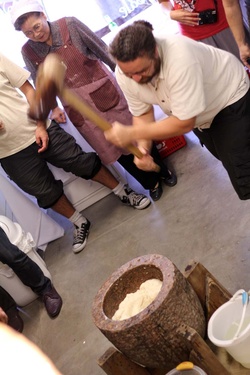
I also met Roberto Maxwell, Brazilian journalist living in Japan since 2005. He brought to São Paulo his work “Kome,” series of photographs and video documentaries about personal relationships in the communities of Tohoku, which were on exhibit during October 2012.
Another remarkable story was the interview (made by email) with Thomas Köhler, travel agent from Switzerland who walked the west coast of Japan in the second half of 2011 in order to revive tourism in the country. This walk generated the documentary “Negative: Nothing,” which unfortunately was not exhibited in Brazil.
In São Paulo, in the following years, Nikkei associations organized memorial events such as exhibitions of photos, children’s drawings and religious ceremonies. In 2015, however, I had not heard about any.
Today, I no longer work with that site. However, I still attend activities of Nikkei community and watch news from Japan. I know that the country is not yet fully recovered, many people are still unable to return to their homes and that the plant in Fukushima still requires care.
In general, the impact of the events of March 11, 2011 in the Nikkei community was of sadness and concern. Some time later, on the other hand, it had helped to reaffirmed many values related to the Nikkei in Brazil, such as work, perseverance and endurance, which were a little forgotten.
Just as I had seen in person how the cities of Hiroshima and Nagasaki look today, I hope to do the same in the Tohoku region soon.
© 2015 Henrique Minatogawa


